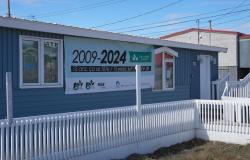Senegal plans to launch, next July, its first satellite called Gaindé Sat, a 1U type satellite. The project, initiated by the Ministry of Higher Education, Research and Innovation, involves a technical committee composed of teacher-researchers from Senegalese academic institutions, as well as the collaboration of beneficiary structures. Professor Gayane Faye, project coordinator and specialist in Physical Sciences, explains to The Conversation Africa the relevance of the project, the main missions of which are the collection of environmental data and the taking of low-resolution images of Senegal. He also highlights the importance of collaboration between African countries in the space domain.
WHAT TYPE OF SATELLITE IS SENEGAL PLANNING TO LAUNCH?
The satellite we are about to launch is a 1U satellite. which has two main missions. The first is the collection of environmental data. And the second is an imaging show. Moreover, this is why it was called Gaindé Sat: Gainde means lion, it is the totem of Senegal. It is also an acronym that stands for Automated Satellite Environmental Data Information Management. This will involve collecting environmental data that state institutions usually collect manually. As an example, we can cite the Directorate of Water Resources Management and Planning (DGPRE), which has measuring stations across Senegal and which, to retrieve the links from these measuring stations, uses travels locally to connect a computer or by using the transmission networks of telephone operators. Which is expensive. The project is 100% funded by the state of Senegal. Going into the field and connecting your computer to retrieve the data is also expensive. This satellite’s mission is to connect to the measuring stations of these structures at each pass and to suck up the data before sending them to the Diamniadio control center (near Dakar). This first application will make it possible to expand and later connect all the measuring stations of state structures and, why not, private structures to facilitate the collection of environmental data. The satellite’s second mission will consist of taking images of Senegal. These images will be of low spatial resolution because, at the moment, it is a small satellite which cannot take images with high resolution. They will make it possible to test certain applications with the aim of having sovereignty in the collection, analysis and exploitation of images for the production of services to support the development of Senegal.
WHAT ARE THE OTHER POTENTIAL BENEFITS AND BENEFITS?
As mentioned previously, this initiative will facilitate the collection of data allowing structures to save time and money. For example, in the Sine Saloum region (center of the country), in the south or east of the country, moving a team to recover data can be costly in terms of resources and time. The direct aspiration of data to the Diamniadio station, where they are directly accessible on the computer, represents a significant saving of time and money. Additionally, it facilitates rapid decision-making and early warnings. For example, in the event of a flood, Senegal will be able to make decisions quickly. Another advantage is the stimulation of innovation and the motivation of young people. Participating in the manufacture of a satellite can inspire other vocations and arouse ambitions. This is why we plan to visit training centers and schools to encourage vocations, demystify these technologies and remove certain barriers perceived as insurmountable. It’s about enabling young people to develop their full potential. The data collected will also make it possible to conduct research to improve future missions assigned to the satellite.
WHO WILL BE INVOLVED IN THIS PROJECT?
This project is initiated by the Ministry of Higher Education, Research and Innovation and is called SENSAT. I have had the honor and privilege of directing and coordinating it for four years. A technical committee has been set up. It is made up of teacher-researchers from the École Supérieure Polytechnique, the École Polytechnique de Thiès, the École Polytechnique de Saint-Louis, as well as the Institute of Earth Sciences where I come from. Young people were also selected to participate in the project. We have involved all the beneficiary structures, such as the Directorate of Water Resources Management and Planning (DGPRE), the Office of Lakes and Watercourses (OLAC), the National Civil Aviation Agency and meteorology, etc. We collaborate with all these structures to involve them in the reflection and review of our work. Regular reviews of the progress of the project are organized, allowing corrections to be made and urgent measures to be taken if necessary. All these structures, as well as the Research and Innovation Department, participate in this process.
OTHER AFRICAN COUNTRIES HAVE LAUNCHED SATELLITES IN THE LAST TWO YEARS. WHAT TYPE OF COLLABORATION ARE YOU ENVIRONING WITH THESE COUNTRIES?
The space domain is vast, complex and requires a significant workforce. It is therefore not realistic for each country to manage everything alone. Although everyone must make an effort, it is important not to disperse ourselves. It is therefore necessary to collaborate with other countries. As coordinator of the academic network GMES & AFRICA (Global Monitoring of Environment for Security and Africa), the space program of the African Union, I have advocated at numerous events for the pooling of our efforts with a view to achieving spatial sovereignty. Each country must lay the fundamental foundations in terms of training human resources, establishing infrastructure and a space ecosystem to address the major challenges that transcend borders. Currently, we do not have specific partnerships with other countries, but we are in contact with managers of space projects and programs on the continent. Furthermore, we are strategic partners of the University Space Center of Montpellier, in France, where our engineers are trained in the development of space objects. This center has extensive experience and offers the advantage of being an academic partner. If it were a private partner, it would be oriented towards the commercial sector, which would make technology transfer difficult for us. The role of an academic partner is knowledge sharing, which has allowed us to acquire very useful skills to continue the development of Senegal’s space project.
THECONVERSATION.COM






